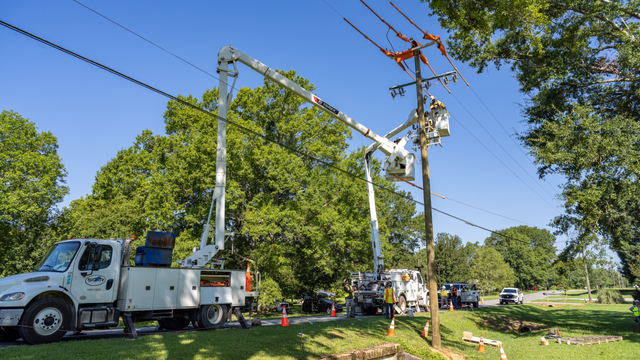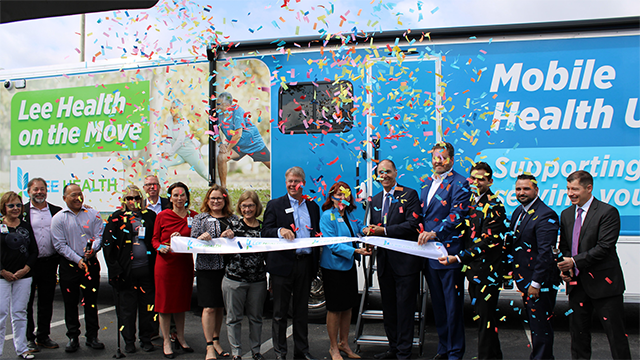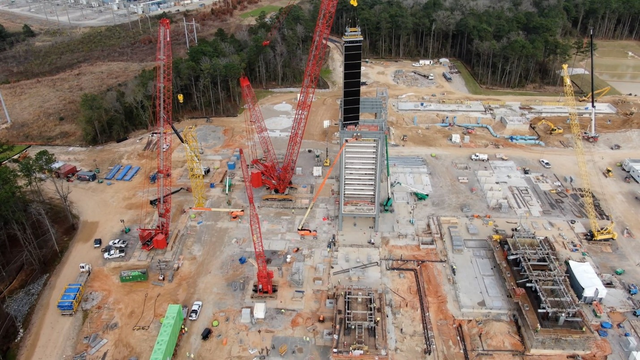By Deepa Poduval, Dan Schmidt and Jeffrey Spivak
As ratepayers continue to seek more renewable energy integration, the electric industry is struggling to create the optimal mix of fuels that will economically meet sustainability goals. Boosted by a slew of factors – including decreasing costs, advancing technologies, new carbon-reduction policies, consumer pressure and regulatory support – renewables show no sign of slowing down. But their ability to provide reliable, consistent baseload power remains firmly in doubt because of the inherent intermittency of wind and solar photovoltaic.
When looking at the current landscape, it is clear that renewables cannot yet fully replace the entire capacity of retiring nuclear and coal-fired generation, leaving baseload gaps that need to be filled. The overwhelming consensus in the power industry is that there will always be a need for baseload capacity — but now the question becomes, what will help fill that gap?
Filling the Gap Left by Renewables
Energy storage eventually may help assuage this issue, but scalable and cost-effective, long-term energy storage technology is not quite here yet. The recently affirmed FERC Order 841 has facilitated adoption of energy storage on the wholesale market, and deployment continues to rise. However, grid operators still are working through compliance requirements, potentially holding up wider-scale adoption in the near term.
Earlier this year, FERC Chairman Neil Chatterjee remarked that “there are numerous forces driving our current energy transformation, including the shale revolution, the rise in the deployment of renewable energy resources and new technologies, the evolution of competitive markets and changes in consumer preferences.”
These remarks and other industry trends may signal that an integrated and multi-dimensional solution
- one that includes economical and cleaner natural gas, more renewable resources and energy storage
- is needed to meet long-term sustainability and consumer goals.
Continued Regional Drive to Natural Gas, Combined Cycle
The United States is at the tail end of a combined-cycle building boom that lasted several years. Although utilities are ending a period of significant combined cycle construction, amidst a mix of coal and nuclear retirements and a need for peaking capacity, some still plan to invest in additional plants in the future.
According to Black & Veatch’s 2019 Strategic Directions: Electric Report survey, one-third of respondents “probably or definitely” plan to build more natural gas combined cycle plants, while one-quarter “might or might not.” Forty-three percent responded, “probably or definitely not.” This flexible generation capacity is required as the industry shifts its attention to renewable energy, as it provides a significant backstop that will allow for more effective integration.
Interest in building large-scale combined cycle power plants appears to be more popular in certain regions, reflecting regional policy preferences and capacity needs. According to survey data, the South is leaning more heavily toward building these types of projects, followed by the Midwest, the West and, last of all, the Northeast.

This result is unsurprising, considering that the latter two regions are much more aggressive in their drive to integrate renewables and distributed generation, and recent announcements reflect these trends. In March, PowerSouth Energy Cooperative selected Black & Veatch to engineer and manage a new gas turbine combined cycle plant to provide power to customers across Alabama and northwest Florida, while Florida Power & Light plans to add a new 1,600-MW combined-cycle natural gas plant to its portfolio this year.
On the other side of the coin, it is less likely that we would see plans to build new combined cycle power plants in the Northeast, where permitting to build pipelines to deliver supply remains a hot-button issue in New England and areas of New York.
Ensuring Flexible Power Generation
Natural gas-fired generation plays two roles: it supports baseload generation and provides peaking capacity and flexibility, or the ability to react quickly and ramp up when the market needs additional generation. Survey results suggest that utilities recognize that smaller gas-fired plants can provide greater peaking capacity than large-scale ones.
Of those respondents who plan to add gas-fired baseload generation capacity over the next 10 years, a combined 39 percent plan to add less than 300 MW, which could suggest a shift away from larger combined cycle plants and towards smaller projects, such as reciprocating engine-type projects that offer 5 MW to 200 MW of generation, or even simple cycle plants.
These smaller facilities offer the added benefit of increased flexibility in that they can more efficiently
follow load, producing up to 200 MW almost instantaneously. Another benefit is that a utility can more easily site a 100-MW plant exactly where it needs power to serve load without impacting the grid. In comparison, a 1000-MW combined cycle plant would, by definition, impact the grid.
Survey data show that utilities are working to make modifications to their baseload portfolio to follow load fluctuations driven by higher proportion of renewables and distributed generation. Three-quarters of survey respondents are either upgrading their central generation sites to follow load or expect to do so in the near future.
For example, the operator of a coal-fired plant that never dipped below 50-percent when fully baseloaded may consider how to reliably dial down to 25-percent minimum load. Operators also are investigating ways to follow load more effectively in response to market conditions.
Renewables, Gas Make for Strange Bedfellows
There’s no doubt that the relationship between renewables and natural gas will be an interesting one, as they remain tied together in a symbiotic — yet competitive — relationship. According to the survey, industry respondents see renewable generation costs and natural gas fuel prices as the drivers that will most impact the amount of gas-fired generation going forward.

Ten years ago, under the recognition that natural gas would offer a greener generation option relative to coal, the discussion focused on creating policy incentives that would introduce more natural gas into the marketplace. At the time, natural gas prices were high, and so policy incentives were considered to help increase the level of gas-fired generation. With the appearance of shale gas, however, natural gas prices dropped substantially, making gas-fired generation economical and the market provided its own solution. Today, natural gas has overtaken coal as the leading baseload generation source.
It remains to be seen whether history will repeat itself: Renewables are coming down in cost to the point that policy incentives may become unnecessary, as market economics allow a higher integration of renewables within the generation mix.
However, a growing proportion of renewables in the energy mix also imply greater variability of generation,
along with imbalances relative to electric load and consumption. While batteries offer short-term (typically four hours) energy storage, longer-term solutions are needed to address daily and seasonal imbalances between renewable generation and load. Advancements in energy storage technology (as signaled by almost 19 percent of survey respondents) are needed to create technically viable, economical and scalable long-term storage solutions.
As reliability (23 percent) and diversity of generation portfolio (24 percent) remain issues of importance to industry participants, natural gas-fired generation is expected to continue to support the transition toward more sustainable electric generation portfolio in the United States. Gas-fired generation is dispatchable, fast-responding, economical and reliable — making it an ideal partner for renewables.
–
Deepa Poduval is a managing director and associate vice president who leads Black & Veatch management consulting’s oil and gas practice team. Poduval provides strategic, economic, asset management and fundamental market advisory services to producers, midstream entities with assets including pipeline, storage and liquefied natural gas facilities, utilities, project developers, financial institution, and sovereigns.
Dan Schmidt is a senior vice president and leads Black & Veatch’s Power Generation Services group. This Power Generation Services team provides detailed engineering, construction management, consulting engineering and owner’s engineer services for conventional power generation projects worldwide.
Jeffrey Spivak is the applied intelligence director within Black & Veatch's power and oil and gas businesses and a certified competitive intelligence professional. In this role, Spivak manages market research and competitive analyses to assist with new business development for domestic and international markets, and business and geographic trends analysis and forecasting.





